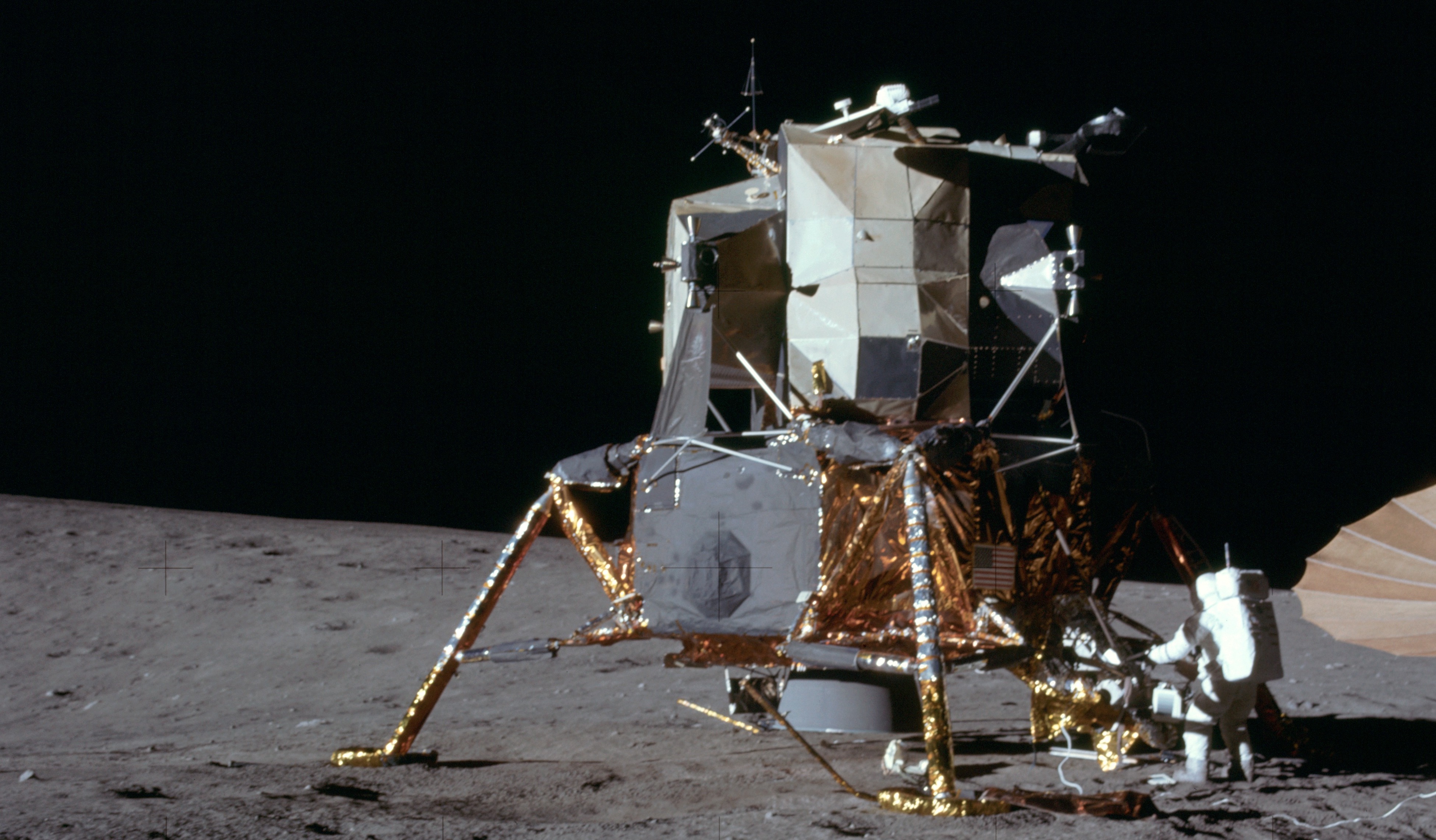
Williams said that repositioning the satellite was a high risk maneuver. "That only came up after the mission was already in operation." "That wasn't planned originally," said Williams. Friedlander said that personnel receiving the images on Earth would make giant prints of these images "and lay them out so they could walk on top of them and look for landing sites." īut at some point during the Lunar Orbiter 1's mission, NASA contemplated pointing the spacecraft's camera at Earth. In addition, the first three spacecraft took highly detailed photos of 20 potential landing sites that looked promising. This NASA Infographic depicts the geometry of how the first photo of Earth from the moon was taken by the Lunar Orbiter 1 spacecraft on Aug. Only in the last two years has NASA's Lunar Reconnaissance Orbiter - still actively circling the moon - generated higher-resolution maps of the entire lunar surface.
#Who took the picture of the first man on the moon tv#
An electron beam would then scan each developed image before transmitting the photos back to Earth using radio signals - the same way television satellites would analog signals to TV stations.ĭeployed one after the other, five Lunar Orbiter spacecraft produced a medium-detail map of 99 percent of the moon. The automated film developer contained a mix of chemicals that would develop the film using a process similar to the method used by Polaroid cameras. The film would roll through, the camera would take pictures, and then move the exposed film to an automated developer. Williams said that the camera had "these big honking reels" of 70 mm film. "It was an amazing achievement that they could do this." "This thing is going around the moon in zero gravity and developing film," said Williams. The entire camera contraption would have made Rube Goldberg proud, exposing, developing, and processing photographic film onboard a moving spacecraft, traveling around the moon constantly between hot and cold temperature extremes anywhere from approximately 27 to 3,700 miles above the lunar surface. A second telephoto lens took high-resolution images yielding details as small as 5 meters in size. For every swath of real estate on the moon that the medium resolution lens imaged, the high resolution lens would take three snapshots of smaller areas within that swath. One lens took wide-angle images of the moon at medium resolution.

The Lunar Orbiter camera contained dual lenses, taking photos at the same time. (Image credit: Courtesy of George Eastman House, International Museum of Photography and Film) A second telephoto lens took high-resolution images in greater detail.

The Lunar Orbiter's onboard camera contained dual lenses that took photos simultaneously.


 0 kommentar(er)
0 kommentar(er)
